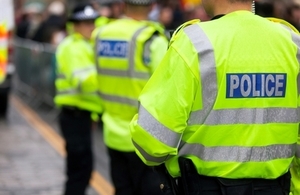Armed policing code strengthened in response to Grainger Inquiry
New code will bring greater clarity to the process of approving police use of less lethal weapons.

The Home Secretary’s role in approving police use of less lethal weapons has been strengthened, in the first change to the firearms code for 17 years.
This new code will meet one of the recommendations of the Grainger Inquiry, which called for the process to have greater clarity after they found Greater Manchester Police was using CS cannisters without Secretary of State approval.
The inquiry followed the death of Anthony Grainger, who was fatally shot by Greater Manchester Police.
Policing Minister Kit Malthouse said:
We set up the Anthony Grainger Inquiry to provide answers for his family and to ensure policing learned the lessons from the tragedy.
This new code shows we are responding swiftly to the inquiry’s recommendations.
The use of firearms by the police should always be a last resort, considered only where there is a serious risk to public or police safety.
‘Less lethal weapons’ approved for police use currently includes tasers and attenuating energy projectiles.
The approval process has been strengthened by stating explicitly that Secretary of State approval is required for all new less lethal weapons systems and all significant changes existing systems.
The new ‘Armed Policing and Police Use of Less Lethal Weapons Code of Practice’ will be published by the College of Policing. It replaces the 2003 Code of Practice for the Police Use of Firearms and Less Lethal Weapons.
The code of practice sets out the basic principles of the selection, evaluation, approval, authorisation, acquisition, training and deployment of firearms and less lethal weapons by the police.